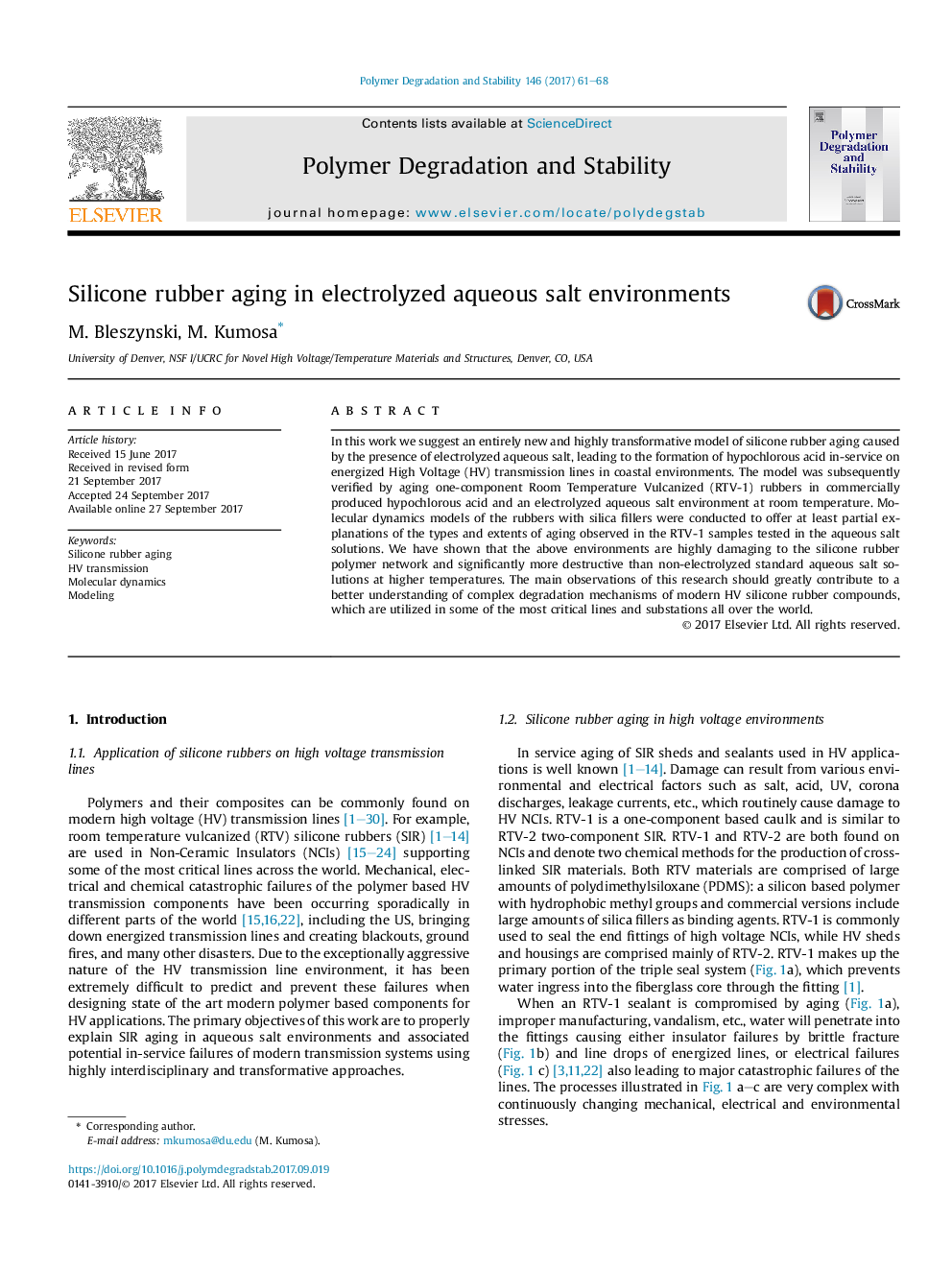| Article ID | Journal | Published Year | Pages | File Type |
|---|---|---|---|---|
| 5200634 | Polymer Degradation and Stability | 2017 | 8 Pages |
Abstract
In this work we suggest an entirely new and highly transformative model of silicone rubber aging caused by the presence of electrolyzed aqueous salt, leading to the formation of hypochlorous acid in-service on energized High Voltage (HV) transmission lines in coastal environments. The model was subsequently verified by aging one-component Room Temperature Vulcanized (RTV-1) rubbers in commercially produced hypochlorous acid and an electrolyzed aqueous salt environment at room temperature. Molecular dynamics models of the rubbers with silica fillers were conducted to offer at least partial explanations of the types and extents of aging observed in the RTV-1 samples tested in the aqueous salt solutions. We have shown that the above environments are highly damaging to the silicone rubber polymer network and significantly more destructive than non-electrolyzed standard aqueous salt solutions at higher temperatures. The main observations of this research should greatly contribute to a better understanding of complex degradation mechanisms of modern HV silicone rubber compounds, which are utilized in some of the most critical lines and substations all over the world.
Keywords
Related Topics
Physical Sciences and Engineering
Chemistry
Organic Chemistry
Authors
M. Bleszynski, M. Kumosa,
